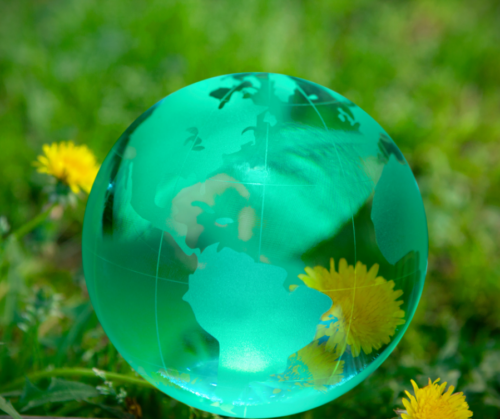

Doing Our Part: Environmentally-Friendly Landscaping
Every day we hear a growing amount of dire news on greenhouse gasses, the ozone layer, and weather patterns taking us from one dangerous extreme to another. Our collective carbon footprint grows every time we build a new shopping center, push a gas pedal, or fire up a manufacturing plant. With plenty of argument over what to do about it, the climate crisis still affects us in ways that might surprise you. And yes – we can do our part in your business’s outdoor space to make a difference! JubileeScape is committed to environmentally friendly landscape tactics that not only reduce our carbon footprint, but create a more beautiful product, too.
During a plant’s normal “breathing” process, its foliage naturally absorbs ozone. Toxins are formed as soon as the ozone mixes with compounds inside the plant, impacting the plant in several ways, including unsightly discolorations, silver spots on plants, and an overall failure to thrive. You may see tiny spots on the surface of leaves: yellow, red, dark brown or even purple in color. Gradually those spots merge to form large dead areas. Citrus trees may reduce their yield and lose their leaves. Conifers and white pines turn yellow. Treating injured plants by ensuring plenty of water and fertilizing on schedule will help. Keep your garden free of weeds too, so plants don’t have to compete for moisture and nutrients.
Mulch
During our hottest months, mulch helps keep soil moist as an insulation to keep soil temperature down. The result? Less irrigation (and lower water bills) and healthier flowerbeds.
Native Plants
Our landscape design team begins with a priority on native plants, not just the flashy bloomers you may find at big-box suppliers. Why? Planting native shrubs, flowers and trees is a strategic move. Native plants flourish with little or no outside help as they’re naturally inclined to grow right here with our climate and soil conditions. Native trees, shrubs and flowers offer minimal upkeep, optimal growth, and year-round beauty.
Hand Pruning
Hand pruning is not only better for the plant, but does the earth a favor, too. Our team hand-prunes ornamental shrubs and perennials to ensure healthy growth without removing the branches that become blooms during the next season like azaleas. Power shears may be more efficient but generate gas and electricity. Hand pruning lends a more natural, pleasing shape to your plants and makes clean-up easier, too.
Water Sense
JubileeScape is an EPA WaterSense ™ partner – meaning we follow the most stringent guidelines on water-reducing planting and irrigation methods. Smart Irrigation Systems with automatic weather sensors help reduce water waste. Consider an old-fashioned rain barrel if you have space! Trapping and storing rainwater in an inexpensive, easy to install rain barrel offers water for flowers and shrubs. Even a light rain can fill up a barrel quickly.
Grass Clippings
When you mow your outdoor space, your instinct is likely to bag the clippings. Think again. Grass clippings are chockablock with nutrients, the best possible fertilizer for your soil. Letting grass clippings fall naturally produces a thatch layer at the base of your turf, which is healthy for the lawn. Not to mention, ditching the plastic bags keeps them out of landfills, too.
Compost
Coffee grounds, eggshells and old newspapers have a healthy next life as compost. Like grass clippings, yard and kitchen waste decomposes into food rich with nutrients for flowerbeds and vegetable gardens. Consider a kitchen-counter compost bin or even a compost pile if you have the space in a corner of your property.
Don’t feel overwhelmed – we certainly don’t have to check every box to live a more environmentally-friendly lifestyle. Try incorporating one or two ways to reduce your carbon footprint and make your landscape easier on the air we breathe and outdoors we love!

